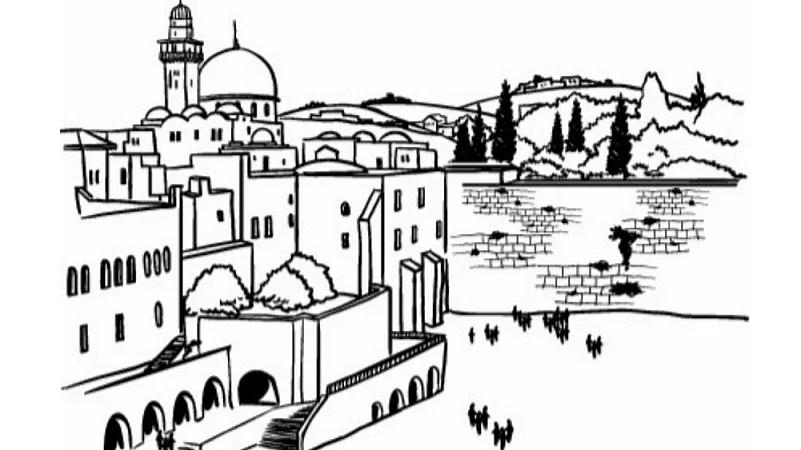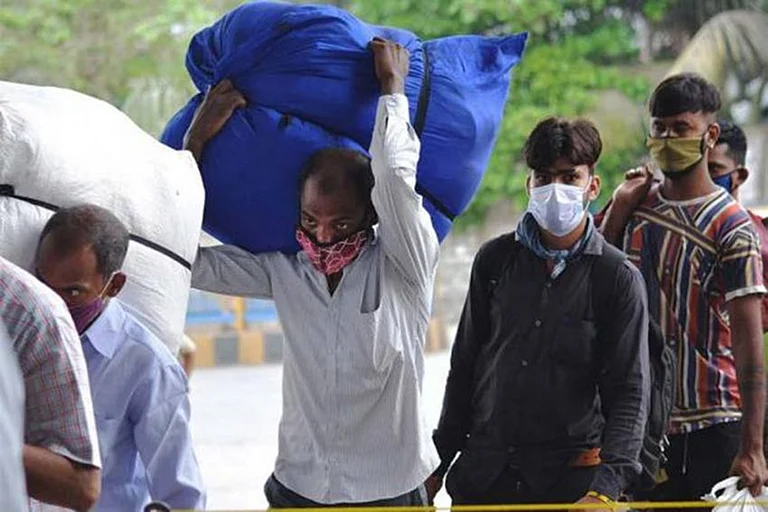Historian Vikram Sampath, who is in the midst of a plagiarism row over his new book on V.D. Savarkar argued in a 2019 article that the Ram Janmabhoomi movement at Ayodhya was akin to the Jewish quest for the revival of the Second Temple in Jerusalem. I had visited Jerusalem in December 2018, and while I disagree with Sampath’s comparison of Jerusalem with Ayodhya, what I discovered in the course of my travels through Israel and Palestine became an education in how religious conflict and its attendant politics have been at the very centre of civilisational churning and can alter the destiny of a people.
Lessons From Jerusalem
Jerusalem, the holy land which birthed three major world religions — Judaism, Christianity, and Islam — is also the crucible of human civilisation. Situated in the Fertile Crescent region, this part of the world has witnessed it all: from the advent of agriculture 10,000 years ago, to the Islamic conquest (636-637), to the Crusades (1095-1291) to the British conquest in the 20th century. Today, the region is marred by conflict between Israeli Jews and Palestinian Arabs, which intensified after the Naqba of 1948, when Israel declared itself as a separate nation.
Anthropologically speaking, the story of Jerusalem allows us to understand how the human impulse to divide communities along religious lines and organise them as such for the purpose of conquering whole populations and territories has had terrible consequences for mankind, over the centuries. Take anti-Semitism or the prejudice against Jews, for instance. Today, most of us associate anti-Semitism with the recent memory of the Holocaust that occurred in Nazi Germany under Adolf Hitler. However, a museum display I saw in Jerusalem’s Yad Vashem, The World Holocaust Remembrance Center, noted that this hostility against the Jews has Christian origins. With the rise of Christianity in the Judean region, the belief that it was Jews who were responsible for the murder of Jesus Christ spread, leading to Jews being framed as evil and justifying their persecution.
At the Masada fortress in Israel, I heard the story of the Roman conquest of the fort (73-74 CE), which the Jews had resisted, and in the end, committed mass suicide to escape capture at the hands of the enemy. Today, this fortress stands as a symbol of Jewish pride and freedom. The tour guide who took me around the place said that Jewish people have always considered themselves to be superior to other groups and after being subjugated to foreign rule over centuries, today Israel was finally theirs to claim.
But Israel’s cherished freedom has come at the cost of brutal suppression of the Palestinian people. A wall, both literally and metaphorically, runs between the Israeli and Palestinian territories today. The place is like a tinderbox ready to explode at any moment. Over the years, civil war and riots have destabilised peace in the region and the Palestinian territories in Gaza and West Bank have turned into havens of terror. The famed Western Wall in Jerusalem, a remnant from the Jewish Second Temple demolished by the Romans in 70 CE, continues to be a disputed area with Israeli Jews and Palestinian Arabs fighting over rights to pray at the holy site where the Dome of The Rock and the Al-Aqsa mosque now stand. The mosque is considered by Muslims as the third holiest site after Mecca and Medina.
As Munir Nusseibeh, a human rights lawyer and academic at the Al-Quds University, explained to me, both India and Israel are today facing the consequences of the more recent British colonial legacy. Palestine was split into two after Britain went to the UN seeking a mandate to separate the territory in 1947, much in the same way that the British sought to divide India into two nations. Nusseibeh said that before the colonial period, Jews, Arabs, and Christians lived in relative peace in Jerusalem; not anymore.
Historical Evidence
Now let’s come back to the present situation in India. Sampath asserts that the quest to build the Ram Mandir in Ayodhya is the same as Israel’s effort to resurrect the Jewish Second Temple — both a means to salvage a community’s hurt pride. There is, however, no factual basis to back the claim. Jewish scholars rely on literary sources such as “anonymous works that imitate or seek to interpret the Bible and were preserved by later Christian works by known authors writing in Greek, such as the 1st-century Jewish philosopher Philo of Alexandria and the historian Flavius Josephus; the assemblage of texts discovered in the caves of the Judaean Desert, known as the Dead Sea Scrolls; and other sources” (Weitzman and DeBold, 2016) to narrate the history of the Second Temple era. This evidence, along with archaeological evidence from Jerusalem, Masada, and other sites, has allowed scholars to reconstruct a picture of Jewish history and culture from the Second Temple period.

After my Jerusalem tour, I did some digging up at the British Library in London and failed to find any primary source material prior to the colonial period to establish that there was a Ram temple in Ayodhya at the site where the Babri Masjid once stood. The earliest writings on this subject came from a German archaeologist named Alois Anton Führer, who recorded in an 1889 Archaeological Survey of India publication titled The Sharqi Architecture of Jaunpur that “Babar’s Masjid at Ayodhya was built in A.H. 930, or A.D. 1523, by Mir Khan, on the very spot where the old temple of Janmasthanam of Ramachandra was standing.” But Führer’s scholarship has since been called into question. The man was disgraced and expelled from archaeological services later in his career. Hindu right-wing groups, backed by the current ruling party, Bharatiya Janata Party (BJP), have used such sources as well as locally produced narratives to lend credence to the demand for building a Ram temple in Ayodhya.
A group of historians from the Jawaharlal Nehru University noted in a 1989 pamphlet titled The Political Abuse of History that the British invented this lie (about the existence of a temple) to divide and rule India. In the same document, the group of historians also state that available archaeological evidence reveals that the earliest settlements in the region around present-day Ayodhya dates back to about the eighth century BC and were of a rudimentary nature, while the Valmiki’s Ramayana dates his birth to the “Tretha Yuga, that is thousands of years before the Kali Yuga, which is supposed to begin in 3102 BC”. Archaeologists, thus, believe the story of Rama and his place of birth lie outside of the limits of archaeology!
In 2003, the Archaeological Survey of India submitted a report in an Indian court that its excavations found distinctive features of a 10th-century temple underneath the demolition site, but questions have been raised regarding its credibility. An astrophysicist and historian of science Rajesh Kocchar has argued that the original Ayodhya mentioned in the Ramayana stands somewhere in present-day Afghanistan and not in the Uttar Pradesh town where it is now believed to be! Belgian orientalist Koenraad Elst, who is sympathetic to the cause of Hindu nationalism, has challenged this thesis. Ultimately, the truth itself remains buried in the sands of time and it is beyond our means to fathom its depths.

But what cannot be denied is the obvious political motive that informs the propagation of such historical narratives. In his Commission of Inquiry Report 2009, Justice Manmohan Singh Liberhan had noted how the act of demolition of the Babri Masjid was “directed for or to acquire political power and thereby achieve politically desirable results.” Over a decade later, as the construction of the temple continues apace, and BJP seeks votes in the Lord’s name, Liberhan’s words ring truer than ever. Today, in India, the greeting Jai Shri Ram has turned into a call to take arms against our Muslim brethren or harass young school girls coming to school wearing a hijab.
*
I am reminded of a clay goddess figurine from the prehistoric era that was on display at the Israel Museum in Jerusalem. The text accompanying the display observed that “The first gods appeared among agricultural communities some 8000 years ago…” Other items on display as part of ‘A Brief History of Humankind’ collection showed that the human fixation over sundry gods was most likely the consequence of humankind’s transition from a life of hunting and gathering in the wild to that of settled agriculture. Archaeologists have arrived at similar conclusions based on excavations at Neolithic sites such as Gobekli Tepe in the south-eastern Anatolian region in Turkey. The belief in a common God gave humans a reason to congregate and relate to one another as a community. But what our ancestors might not have foreseen is the strife and division it would go on to incite in the world one day…
(Vidya Venkat is an anthropologist and researcher at London’s School of Oriental and African Studies (SOAS). She blogs at www.vidya-venkat.com)





















